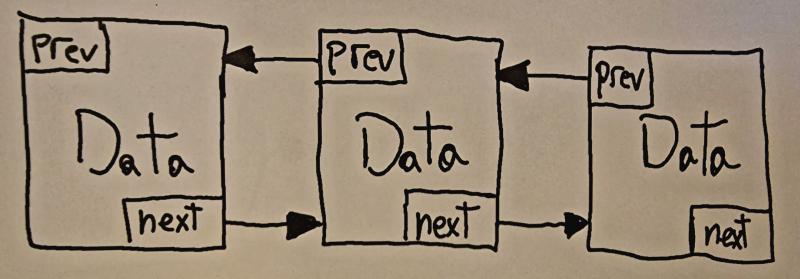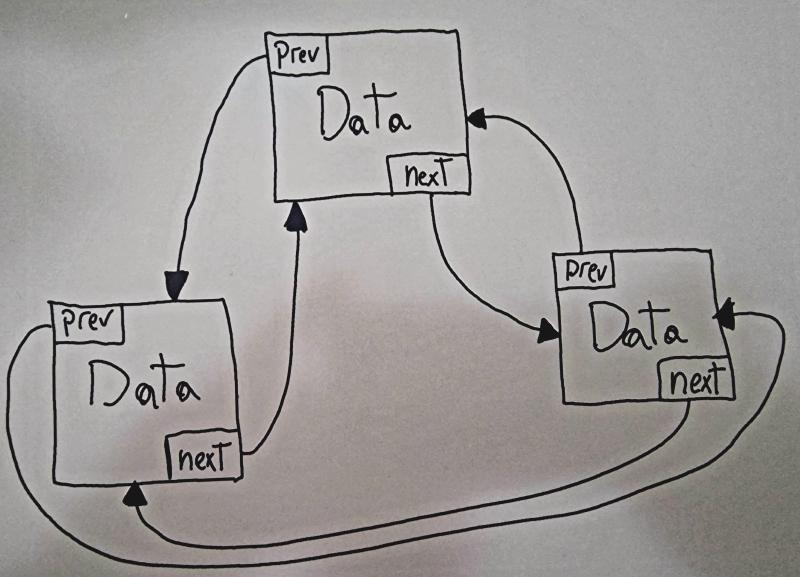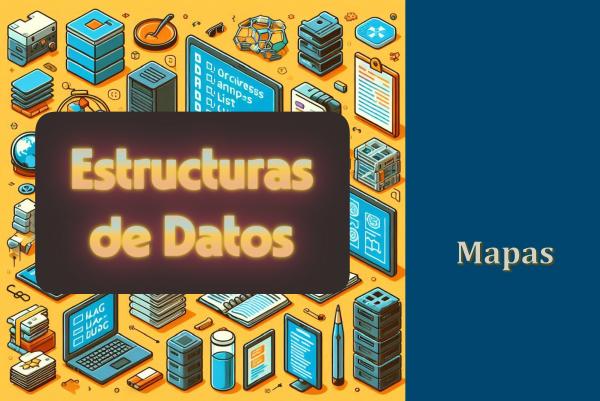Una lista enlazada se compone de nodos donde cada nodo tiene dos partes:
- Dato o información
- Referencia al siguiente nodo
Los nodos se organizan de forma secuencial, cada uno apuntando al siguiente. El último nodo apunta a nulo para indicar el final.
Esta estructura dinámica permite inserción y eliminación eficiente de nodos.
Tipos de listas enlazadas#
Existen varios tipos:
- Simplemente enlazada: Cada nodo apunta al siguiente. Son útiles para colas (queues) y pilas (stacks).

- Doblemente enlazada: Cada nodo tiene referencia al siguiente y al anterior. Permiten recorrer en ambos sentidos.

- Circular: El último nodo apunta al primero formando un ciclo. Útiles para buffers circulares.

Operaciones comunes#
Insertar: Agregar nodos al inicio, final o medio de la lista.
Eliminar: Quitar nodos por valor o posición.
Buscar: Encontrar nodos por valor recorriendo la lista.
Recorrer: Iterar los nodos accediendo por las referencias.
Implementación#
Las listas enlazadas se pueden implementar de la siguiente manera:
Usa la clase ListNode para representar nodos:
class ListNode:
def __init__(self, value):
self.value = value
self.next = None
Luego para crear y usar una lista se define una clase LinkedList con métodos para las operaciones.
class LinkedList:
def __init__(self):
self.head = None
def add_to_start(self, new_value):
new_node = ListNode(new_value)
new_node.next = self.head
self.head = new_node
def print(self):
current = self.head
while current != None:
print(current.value)
current = current.next
def search(self, searched_value):
current = self.head
while current != None:
if current.value == searched_value:
return True
current = current.next
return False
#...other methods
Con esta clase LinkedList podemos crear una lista, agregar nodos, imprimirla, buscar elementos, etc.
Se podrían agregar otros métodos como insertar al final, eliminar por valor, obtener por índice, etc. Pero esto da una idea de cómo encapsular la funcionalidad de la lista enlazada en una clase. Como práctica, podés intentar agregar estos métodos por tu cuenta, ¡no dudes en dejar tus comentarios y contactarte si necesitas ayuda!
Ventajas y desventajas#
Ventajas:
- Insertar y eliminar nodos es eficiente.
- No requiere definir tamaño fijo como los arrays.
- Estructura dinámica y flexible.
Desventajas:
- Mayor uso de memoria por tener que almacenar referencias.
- El acceso a elementos por índice es más costoso al ser secuencial.
Ejemplos de uso#
- Implementar estructuras como pilas (stacks) y colas (queues).
- En listas doblemente enlazadas, recorrer la lista en el sentido ambos sentidos.
- Blockchains como la de Bitcoin.
- Reproducir elementos en orden como playlists de música.
Conclusión#
Las listas enlazadas son una estructura de datos versátil para almacenar secuencias dinámicas de elementos. Tener un buen manejo de estas listas, sus operaciones y usos es indispensable para cualquier programador.








